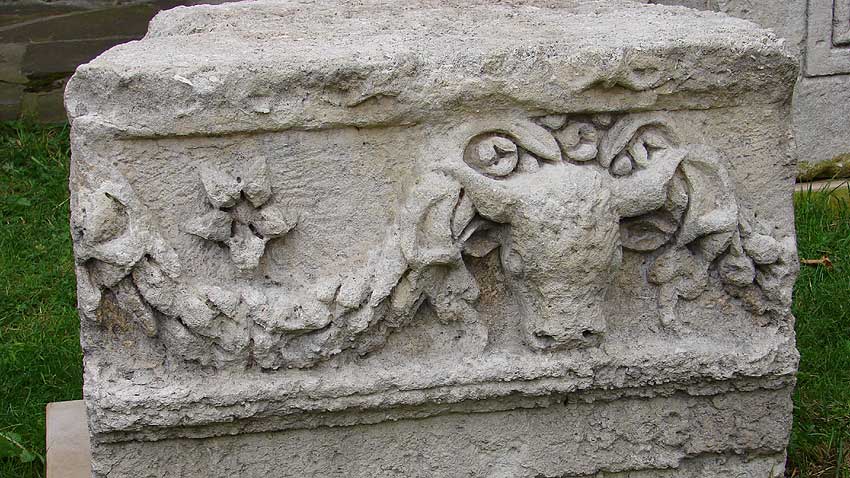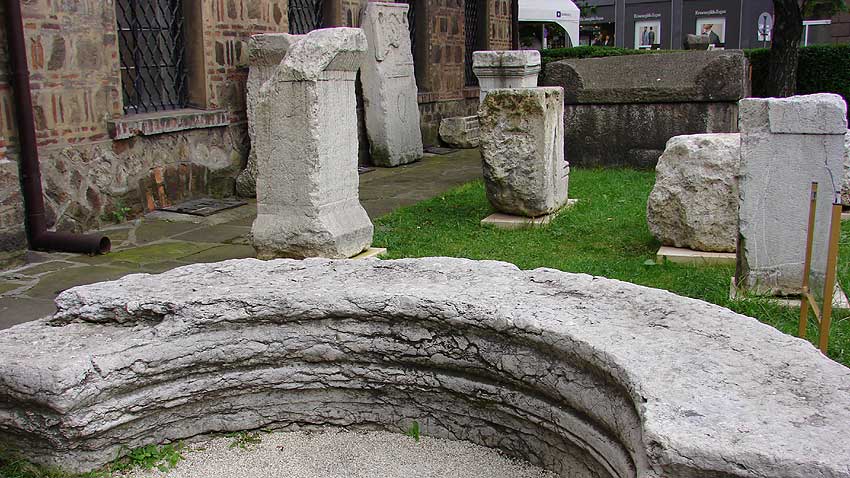Ancient columns, exquisitely carved capitals and friezes, ornamental figures and images, inscriptions which have come down to us from antiquity… are just some of the stone applications on show at the open air exhibition in front of the National Museum of Archaeology with the Bulgarian Academy of Science. The exhibits were restored with the financial support of the American Research Center in Sofia and the America for Bulgaria Foundation.

The monuments displayed in front of the museum date back to the Roman period. They once adorned three ancient cities - Ulpia Oeskus in Moesia Inferior province (today near the village of Gigen, Pleven district), Nikopolis Ad Istrum which was founded by Emperor Trajan, situated 18 kilometers away from the town of Veliko Tarnovo (the former Bulgarian capital) and the ancient town Serdica, predecessor to the present-day capital of Bulgaria Sofia, of which Emperor Constantine the Great used to say “Serdica is my Rome”. The choice of ancient cities is no coincidence - the selection affords an opportunity to see different types of cultural monuments. Here is what Krasimira Karadimitrova, who is in charge of the stone artifacts department at the National Archeological Museum, told Radio Bulgaria:
“We focus most of all on architectural monuments that used to be part part of the urban forum - the main social center of the ancient city. It is important to mention an inscription from Nikopolis ad Istrum containing the word “thermoperipatos”, which means building with heating, which is part of the treasure-trove of the Hellenic language.”

The insciprtion in question was on a building situated some distance from the city forum in Nikopolis ad Istrum, in proximity to over twenty shops. The ancient trade center also had a special place designed for social contacts. Ulpia Oescus also offers unique stone artifacts.
“The biggest urban forum ever found in Bulgaria was situated in that city”, specifies Krasimira Karadimitrova. “It included three temples as well - the temples of Jupiter, of Minerva and of Juno which formed the so-called Capitoline Triad. Such temples are not to be found in any other city. Of course, along with the architectural elements, we have also displayed funeral figurines. We also display different kinds of monuments such as pyramids and tombstones that reveal the specifics of the workshops in different cities, because back then, as now, there were vogues in this sphere. It in fact that is what helps us date the exhibits. We have also displayed two sarcophagi from the necropolis around the Saint Sofia basilica, as well as road pillars with honorary inscriptions by Roman Emperors. These pillars marked the distance from the main city and were key to the communication process in the past.”

The open air exposition also features architectural monuments which were once part of the city forum in Serdica. The works of ancient stone-carving date back to the 1st up to the 6th century AD. We usually say that stone is basically eternal. However, it also has many enemies.
“Stone's natural enemies are to be found outdoors”, explains Mrs Karadimitrova. "The stone stretches and shrinks after each rainfall and temperature change which may cause fractures and damage. We launched this conservation and restoration process so as to extend the life of these cultural monuments”, concludes Krasimira Karadimitrova.
English version: Kostadin Atanasov
Photos: Veneta PavlovaThe Zograf Monastery on Mount Athos has a new abbot. Hieromonk Gavriil has been elected as the new abbot of the monastery, reported the website of the Bulgarian Orthodox Church. "On Lazarus Saturday, the Zograf Monastery on Mount Athos held elections to..
Pipes from the end of the 17 th , the 18 th and the 19 th century and the tradition of growing tobacco in Bulgaria are presented in the newest exposition at the Museum of Archaeology in Burgas. “Pipes like this are to be found often on the..
In Bulgaria, when we talk about a person with bad luck, we often say: "Ah, what a Marko Totev!" But who exactly was Marko Totev, and how did his name become a byword for a person with ill fortune and a bad luck? "He was a Bulgarian public figure..
The Zograf Monastery on Mount Athos has a new abbot. Hieromonk Gavriil has been elected as the new abbot of the monastery, reported the website of the..

+359 2 9336 661
